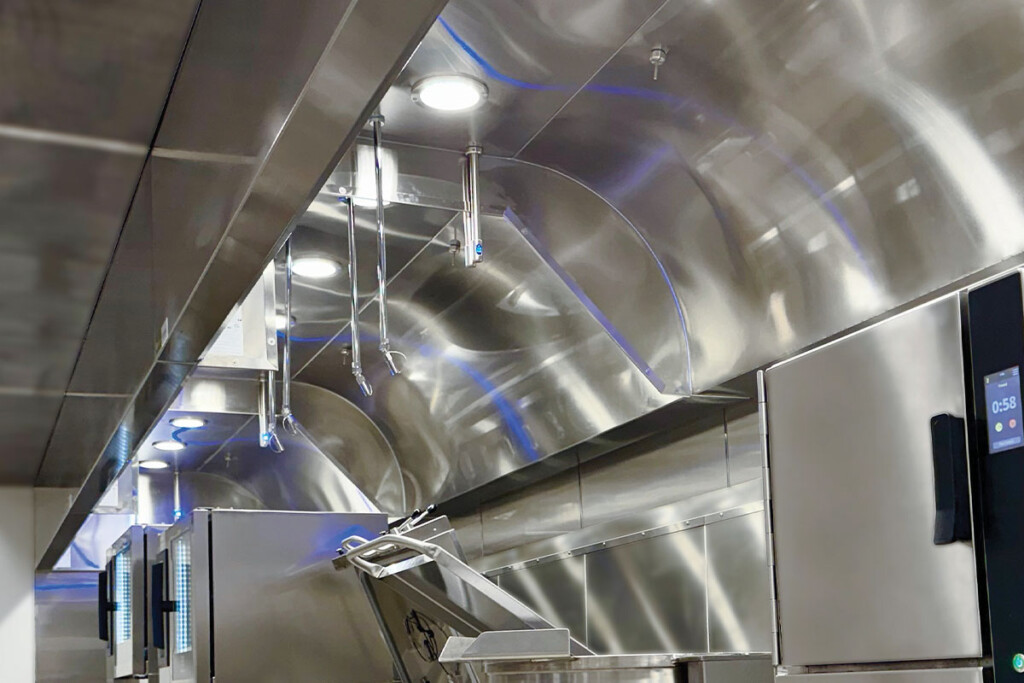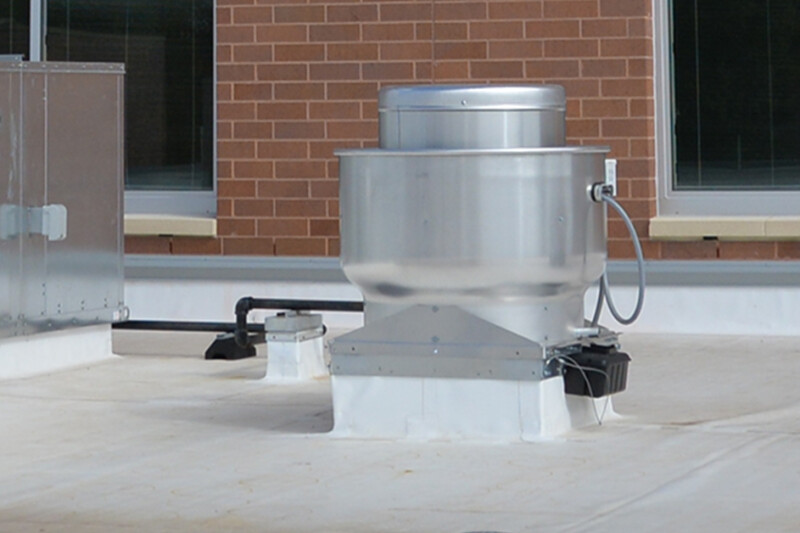
When it comes to energy-efficient ventilation, savings can be found both in and outside the kitchen. Today’s products help operators achieve minute-by-minute efficiency for their specific space to keep air cooler, cleaner and safer—while also lowering energy and infrastructure costs.
The most energy-efficient kitchens take a holistic approach to ventilation, relying on recent innovations like smart sensor technology, as well as time-tested methods like hood design, to gain the most benefit for a specific space.
The following marks some of the latest efficiency developments:
• Smarter demand-control kitchen ventilation:
The first DCKV systems, or energy-management systems, offered a marked improvement from traditional on-or-off hoods. Sensors in the hood canopy adjust exhaust fan speeds based on air temperature. The downside: These systems react to hood temperature, not surface temperature. So while placing a frozen burger patty on a hot griddle instantly sends up smoke and steam, the hood temperature doesn’t change for several minutes.
Since then, one manufacturer told FER, DCKV systems have seen efficiency improvements. The latest models from several manufacturers use infrared sensors that measure surface temperature to adjust fan speeds and modulate dampers when any temperature change is detected—even if that frozen burger patty temporarily cools the griddle.
Multiple hoods can be tied to a common fan, and each hood regulates itself based on surface temperature, optimizing energy savings across the entire kitchen.
Nearly every kitchen can benefit from the idle-time efficiency of DCKV, but high-volume operations with regular slow and busy intervals, like universities and hospitals, see the most savings. Busy-all-day kitchens like fast food chains rarely operate at a lower fan speed and therefore see little added benefit.
• Motorized balancing dampers:
DCKV systems grow even more valuable when paired with motorized balancing dampers, which use automated sensors to adjust airflow in and out of the space. Like DCKV hoods, multiple dampers can be tied to a single exhaust duct, creating greater efficiency.
When specifying dampers, it’s helpful to think about your operation’s building from the roof down. Large, open-air operations that house food halls can’t support the weight of individual rooftop fans for each stall. Adding balancing dampers to each hood allows for automatic, individual airflow regulation. All hood fans are then tied to a single duct that leads to the roof, saving on both equipment and infrastructure costs.
Operations in very tall buildings also benefit from motorized exhaust dampers. Kitchens on the ground floor can direct air from multiple fan hoods through one large duct to a roof dozens of stories away. Dampers create further efficiency by allowing each hood to operate independently.
Think Smart
Many large foodservice operations and fine-dining operations with open kitchens gravitate toward aesthetically pleasing canopy hoods. But manufacturers note that these centralized behemoths are far less efficient because they sit far away from kitchen equipment and require more power to control rapidly expanding air.
Instead, manufacturers recommend that kitchens looking to maximize energy efficiency install back-shelf hoods. These hoods sit closer to equipment, and their placement against a wall limits the expansion of hot air throughout the operation, which in turn decreases cooling costs. Some manufacturers also offer curved hoods that use energy created during the cooking process to naturally push air into ducts (another source of energy savings).
Any kitchen can benefit from thinking smart about hood design. Just remember: Heating and cooling costs can turn a hood into the most expensive piece of equipment in an operation. Thoughtfully adding energy-efficient features to a kitchen can help offset those costs—and create new savings.
MATCHMAKERS
Manufacturers of ventilation products include:
• Accurex
accurex.com
• Avtec
unifiedbrands.net
• Halton
halton.com
RELATED CONTENT
- Advertisement -
- Advertisement -
- Advertisement -
TRENDING NOW
- Advertisement -
- Advertisement -
- Advertisement -


